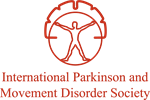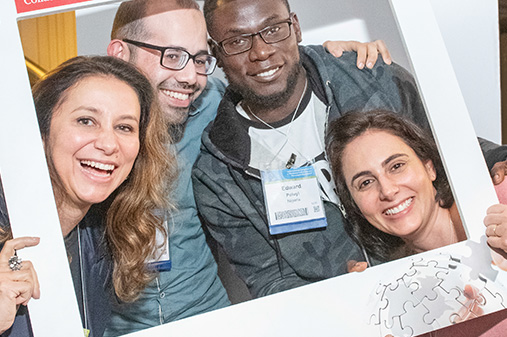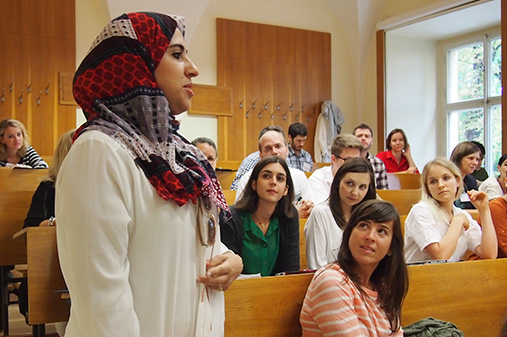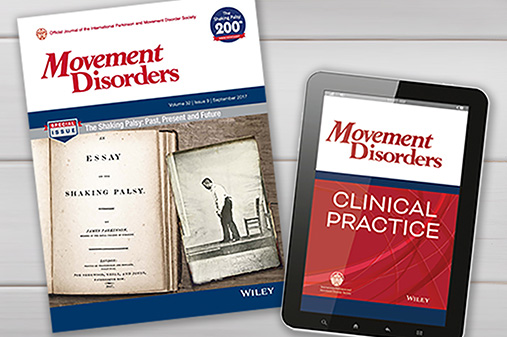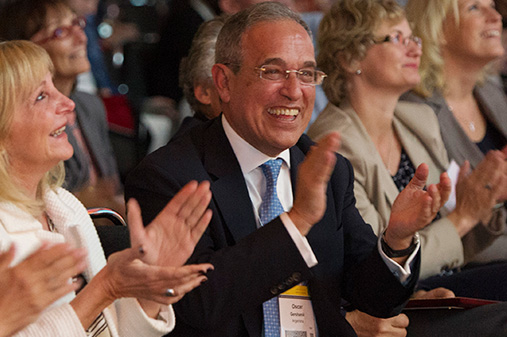(Personal and Partial) History of Clinical Neurophysiology in Movement Disorders
Clinical Neurophysiology developed as a subspecialty of neurology before movement disorders. EEG and EMG were first used in the early part of the 20th century, EEG for epilepsy and EMG for neuromuscular disease. This led to national societies and to the founding of what is now the International Federation of Clinical Neurophysiology (IFCN) in 1947. Movement disorders began with an interest in Parkinson disease, and interest increased rapidly with the demonstration of L-DOPA as treatment in 1967 by Cotzias. Basal ganglia clubs arose with focus on Parkinson disease and Huntington disease (the British disease and the American disease, respectively).
When I came to David Marsden’s Department for my motor control fellowship in 1975, my plan was to study the physiology of normal rapid movements. Lhermitte in France had just found that 5-HTP could markedly reduce myoclonus in patients with post-hypoxic myoclonus, and Marsden wanted to study this in patients in the UK. He had asked Jane Adam, a physiology PhD student in the lab, to look at their physiology, but she wasn’t interested, and she asked me to do it – I agreed. The tools were available. Dawson in 1947 had identified that these patients had large somatosensory evoked potentials, but he did not find it satisfying to overlap multiple single trials to show this. He then invented the average for this purpose, originally a mechanical device, but which was eventually computerized as computers developed. EEG spikes had been seen in association with myoclonus. The possibility of averaging EEG activity prior to an EMG event was invented by Kornhuber and Deecke, who were studying brain activity prior to voluntary movement. They recorded the EEG and movement activity on tape, and then played the tape backwards into an average similarly to recording SEPs, triggering on the movement, and in 1965 discovered the Bereitschaftspotential. With the help of development of the delay line, this process was also computerized. Shibasaki and Kuroiwa first used this in 1975 to find a small EEG spike in the EEG not apparent in the ongoing recording.
Marsden got referrals of myoclonus to the lab. David Chadwick, an epilepsy fellow with Ted Reynolds, was co-opted to do clinical assessments and try 5-HTP. I did the physiology. We found multiple physiological types of myoclonus. In the most common post-hypoxic patients, the back averaged premyoclonus EEG activity looked the same as a component of the “giant” SEP. Moreover, somatosensory stimulation could produce myoclonus that looked like spontaneous and reflex myoclonus. The giant component of the SEP looked the same as the back averaged EEG event. Making a calculation of the afferent time from stimulus to cortex and the efferent time from cortex to muscle, it seemed logical that the sensory evoked myoclonus was a hyperactivity of a long latency reflex mediated by the sensorimotor cortex. Sutton and Mayer in 1974 had even proposed that reflex myoclonus was mediated by the cortex and called it a C-reflex. We were primed to confirm that conclusion. Marsden with Merton and Morton had identified such a long latency reflex in their studies of normal physiology, and I had actually come to Marsden’s lab to study this reflex in relation to rapid movements. An amazing coincidence. We published this in 1979, and at the same time, Shibasaki was coming to the same conclusion, publishing his report a few months before ours in 1978. I referred to it to our paper in a note added at proof stage. Shibasaki and I met at a myoclonus meeting in New York organized by Stan Fahn, and we have been good friends ever since.
Since that time, clinical neurophysiology of myoclonus, including evaluating the EMG, the C-reflex, the SEP, and the back averaged EEG has been used to characterize and classify myoclonus.
In the 1970s and 1980s, there were many small motor physiology meetings, often focusing on specific topics. John Desmedt, who made contributions in virtually all fields of clinical neurophysiology, organized many of them and produced books with the speakers’ papers. I recall one particularly important meeting in Liege organized by Paul Delwaide on the topic of increased tone, how spasticity and rigidity differed and what were their physiologies. Long discussions led to the conclusion, and current understanding, that increased tone had three components, increased reflexes to stretch, increased background contraction due to failure to be able to relax, and changes in the muscles themselves.
In 1985, Stan Fahn together with David Marsden founded the Movement Disorder Society (MODIS), and Reiner Benecke and Bastian Conrad together with David Marsden founded the International Medical Society for Motor Disturbances (ISMD). MODIS would start with a journal, and ISMD would start with meetings, but there was also a difference in focus. MODIS was clinical and pharmacological, while ISMD was physiological. ISMD had meetings in Lausanne in 1986 (where spasticity was a major topic) and in Rome in 1988. MODIS joined ISMD for the next meeting in Washington in 1990, and that was called the first international congress of Movement Disorders (although it was actually the third meeting). Meanwhile, the journal Movement Disorders rapidly became successful. An illustration of the difference of focus of the two societies is the proposal of Johannes Noth to publish the proceedings of a meeting that he organized on spasticity in Movement Disorders as a supplement. After a contentious discussion at an Editorial Board meeting, the supplement was turned down because spasticity was not a movement disorder. Nevertheless, the two societies merged after negotiations from 1992 to 1994 to form a new society also called the Movement Disorder Society but now abbreviated MDS to indicate that it was different from the two original societies. The idea was to foster all fields of movement disorders, but the focus on clinical neurophysiology has faded over the years, and MDS now has a new task force on Clinical Neurophysiology to assess the current situation and to advocate for more use of clinical neurophysiology in clinical practice of movement disorders.
Back to the clinical neurophysiology. Much of the work in clinical neurophysiology has been in understanding the pathophysiology of different movement disorders, similar to the interest in increased tone described above. Why are patients with Parkinson disease slow? What is the fundamental disturbance in cerebellar ataxia? Why do patients with dystonia have abnormal postures? I will discuss here one more theme, functional movement disorders, which, similar to myoclonus, is a personal interest and a disorder where clinical neurophysiology can usefully extend the neurologic exam.
Functional neurological disorders, first called hysteria, have been known since the early days of medicine. They were of particular interest to Charcot, Janet, and Freud. Freud devoted himself to the disorder, and, on the basis of his theory of psychological causation, called them conversion disorders. Then, bound up in the development of psychoanalysis and Freud’s evolution of thinking to the Oedipus complex, the disorders became relatively neglected by the rest of medicine. Neither neurologists or psychiatrists were trained in these disorders, and, has been well documented the topic disappeared from neurology and psychiatry textbooks. In the late 1970s and early 1980s, many of the focal dystonias were thought to be of psychogenic origin, and Marsden and Fahn rightly argued that they belonged in the dystonia spectrum, but they recognized that some patients did have psychogenic dystonia. Fahn, together with Williams in 1988, developed the first formal criteria for the diagnosis of psychogenic dystonia, and the term psychogenic movement disorder arose. What to call these disorders has always been controversial. Marsden in 1986 opined about the name, and suggested staying with hysteria, but psychogenic movement disorders stuck until the last few years when the consensus changed to functional movement disorders.
The clinical neurophysiology of functional movement disorders developed alongside the clinical aspects. In relation to functional myoclonus, Thompson and Marsden in 1992 first drew attention to the fact that functional sensory provoked myoclonus had latencies that looked like voluntary reaction time responses even though they were involuntary. They were longer and more variable than the latencies of cortical myoclonus. Terada and Shibasaki in 1995 back averaged the EEG in functional myoclonus and found a Bereitschaftspotential (BP). This was remarkable since the BP had been described for voluntary movements and not before in relation to an involuntary movement. These two observations together continue to be useful to identify functional myoclonus, but also reveal that the movements of functional myoclonus use voluntary mechanisms. In 2012, van der Salm and Tijssen looked at the sensitivity and specificity of the BP for analyzing jerky movements and found it to be valuable.
In regard functional tremor, it had first been observed clinically by Koller that tapping with one hand might entrain the tremor to that frequency. O’Suilleabhain and Matsumoto in 1998 showed this with EMG recordings. Zeuner in my laboratory in 2003 showed this as well with accelerometry and noted that that the tremor might be altered in frequency and not necessarily entrained at the same frequency as the tapping. She also pointed out that patients did not necessarily do their voluntary tapping correctly, and this itself might be a useful sign. Schwingenschuh with Bhatia and Edwards put these signs together with a few others and came up with a combined functional tremor score with high sensitivity and specificity.
With the development of these clinical neurophysiological methods, in 2009 Gupta and Lang suggested that there should be a category of diagnostic certainty called “laboratory supported.”
There have been three international meetings with a focus on functional movement disorders that I organized together with leaders of MDS, including past presidents Fahn, Jankovic, and Lang, and others. The International Parkinson and Movement Disorder Society supported all of them and served as the Secretariat, although they were not official MDS meetings. The first meeting in 2003 included much physiology including a major session on how the brain might make movements without developing the sense of voluntariness. The second was in 2009, and the third in 2017 which was broader in scope to include all functional neurological disorders. The third meeting generated sufficient enthusiasm to give birth to a new society, the Functional Neurological Disorder Society, which was founded in 2019 with blessing from its parent, MDS.
In 2006, I wrote an article, “Functional Movement Disorders, A Crisis for Neurology.” I noted our collective ignorance about the nature of the disorder and the difficulties of diagnosis and treatment. In 2019, by invitation of Jose Obeso, I wrote another article for Movement Disorders, asking whether the crisis was resolved. I concluded that it is resolving, and clearly clinical neurophysiology is helping, both with diagnosis and with insights into the nature of this interesting disorder.
